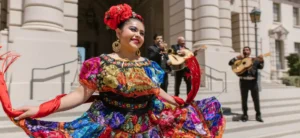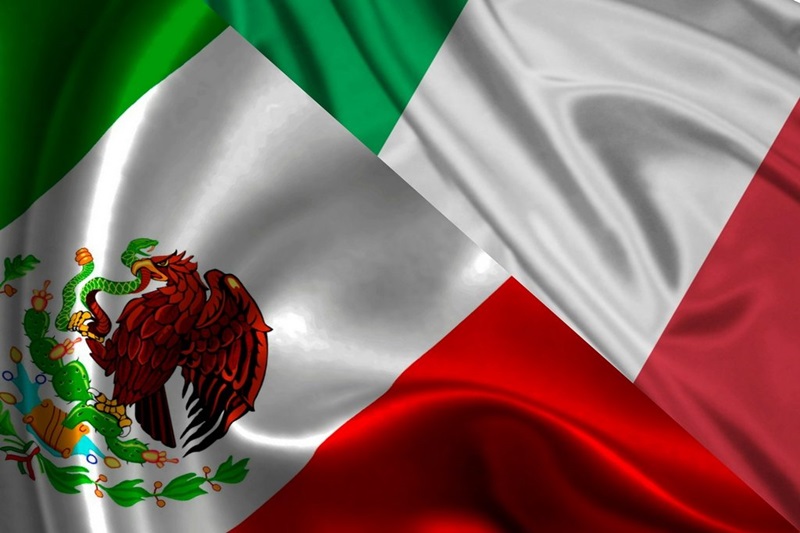The Rich History and Vibrant Beauty of Traditional Mexican Clothing

Traditional Mexican clothing is the product of centuries of evolution, from the pre-Hispanic peoples, through the colony, to the modern era.
Each stage in the history of Mexico has a unique contribution of traditional Mexican clothing, and this, gives it a cultural contribution with great value for this country.
Traditional Mexican clothing is a direct reflection of the dedication, originality, creativity and skills of Mexican artisans.
In this sense, traditional Mexican clothing is one of the most valued around the world for the traditions it keeps, besides being a representation of the people who make it.
Its colors, designs and comfort make Mexican clothing a product that goes beyond fashion, as it is representative of a people as a whole.
In some ethnic groups in Mexico, in addition to continuing to manufacture their attire, they still use it as their daily clothing, while in others they only use it for festivities such as weddings, XV years or religious celebrations.
It is perhaps the traditional Mexican clothing one of the most widespread in Latin America, because nowadays they have added aesthetic elements of great value.
They are not only used in festivals or carnivals, we can also see them in catwalks, stores and high society events.

Some of the most recognized states throughout the country for their traditional Mexican clothing manufacturing are Chiapas, Oaxaca and Yucatan.
These states are also characterized by their traditional embroidery techniques in the different garments they produce.
READ HERE: THE ULTIMATE GUIDE TO WRESTLING IN MEXICO CITY
Most of the traditional Mexican clothing is specially elaborated to make typical costumes of each state.
Mexican clothing is an immense mixture of colonial and indigenous traditions that have continued to be used throughout the centuries. It is characterized by embroidery, colors, fabrics such as cotton, silk or wool and an immense amount of styles.
It is important to know that Mexican clothing has many variants depending on the region of the country, since they are different uses that are given in the Mexican culture.
Traditional Mexican clothing: The most popular ones
Among the variety of styles and details, there are designs depending on the place of origin, and that have a particular stamp.
Among the traditional Mexican clothing, the following stand out:
The huipil
It is a blouse or sleeveless dress of indigenous origin, which has a rectangular fabric sewn on both sides, with openings for the arms and another a little wider for the head, this is usually made with wool or cotton, embroidered with lots of color.
The huipil has been worn by indigenous women of the Mesoamerican region (from southern Mexico to Central America) of high and low social rank since long before the arrival of the Spanish in America.
It is still a traditional Mexican garment widely worn by women in Mexico.
It is most commonly seen in the Mexican states of Chiapas, Yucatan, Quintana Roo, Oaxaca, Tabasco, Campeche, Hidalgo, Michoacan, Veracruz and Morelos.
The serape
Another of the traditional Mexican clothing is the sarape, a male garment worn by the country man to cover himself from the rain and cold.
It is an attire considered Mexican, the sarape comes from the state of Tlaxcala although each state of Mexico has its own style, sometimes changing the way of elaboration, the design, or the style.
It is the garment of great rural tradition throughout Mexico; it is made with cotton fiber or sheep wool, the thread is of multiple colors and the designs are unique.

The Reboso
Among the traditional Mexican clothing is the reboso, a term that means “to cover the lower part of the face, up to the nose or eyes, with a cape or other garment”.
The use of the garment was born from the need of mestizo women to cover themselves to enter the temples.
READ MORE: THE ULTIMATE GUIDE TO STREET FOOD DELIGHTS
Inspired by the headdresses that the friars imposed on the indigenous women for this purpose, as well as the Spanish women’s cloaks.
The indigenous women used to spin the fibers they used for weaving with a spindle or spindle whorl.
In the same way, silk and wool are worked without abandoning the ixtle or white cotton or coyuebe color, of pre-Hispanic origin.
Each indigenous people have different names to call the shawl, among the Otomi, shawl or rebozo is called mini-mahue while those of Huayapan, Morelos call it cenzotl, a Náhualt word derived from centzontilmantli or “blanket of a thousand colors”.
The hat
If there is something that distinguishes Mexican clothing, it is the sombrero; without a doubt, it is a cliché in every figure in the world when talking about Mexico.
In fact, many only know it as the Mexican hat.
On the one hand, the charro hat originated in the 18th century and is an integral part of the charro costume, the traditional attire of Mexican men who engage in charreria.
On the other hand, the mariachi hat, although similar in style to the charro, is narrower; of course, it is worn by mariachi singers in Mexico.
We can see them in any public or private event; traditional or modern parties; it is a Mexican hallmark.
The Tehuana dress
Tehuana dresses are made of fine materials and are often decorated with brightly colored ribbons and embroidered details.
The design varies according to the region of Mexico and personal style, but always evokes a strong sense of pride and tradition.
The tehuana costume is part of traditional Mexican clothing.
It corresponds to the women of the Zapotec ethnic group, who live in the Isthmus of Tehuantepec. It was born in Tehuantepec, Oaxaca.
Charro costume
And we cannot leave out the charro costume among the traditional Mexican clothing; this garment has its origin in the XVI century when the liberal guerrillas also called “chinacos”.
It was made of blanket and they wore leather over it to protect it since it was forbidden for them to dress like Spaniards.
At the end of the 19th century the charro suit became the new Mexican horseman costume.
It is estimated that the first modern charro suit was worn by Ponciano Díaz Salinas (1856-1899), Porfirio Díaz’s cousin.
They used suits made of wool, with silver ornaments, and the most humble used suede suits.
It is an adapted clothing for men and women; and the particularities are the jacket over a shirt.
In fact, there is a classification of the charro costumes, these are: Gran Gala, gala, media gala and faena.
The Huarache
They are the Mexican footwear par excellence; their presence is spread all over Mexico; models, designs and colors of huaraches fill the market.
Not only in tourist sites, huaraches are the Mexican sandals and their use covers all levels of life in Mexico.

Textiles of traditional Mexican clothing:
Among the peoples, we can determine textiles according to their origin, thus we will have:
Oaxacan textiles, part of the popular art of Oaxaca, reflects the imagination and creativity of a great variety of artists.
The extraordinary textiles, yarns and embroideries with natural products such as cotton, wool and silk constitute a sample of the popular textile art produced in the different Oaxacan zones.
In addition, we must mention the textiles of Tenango:
Tenango textiles is one of the cradles of traditional Mexican clothing.
Tenango is a style of embroidery originating in the municipality of Tenango de Doria, in the state of Hidalgo, Mexico.
It combines colors and the representation of flora and fauna, with scenes of daily life, religion, patron saint festivals, carnival, Day of the Dead, harvest, among others.
The iconography in Tenango textiles is so important and valuable that tenangos are considered Mexico’s cultural heritage.
Traditional Mexican clothing is part of a way of life, but beyond the ethnic or cultural, there is an unquestionable artistic value.






